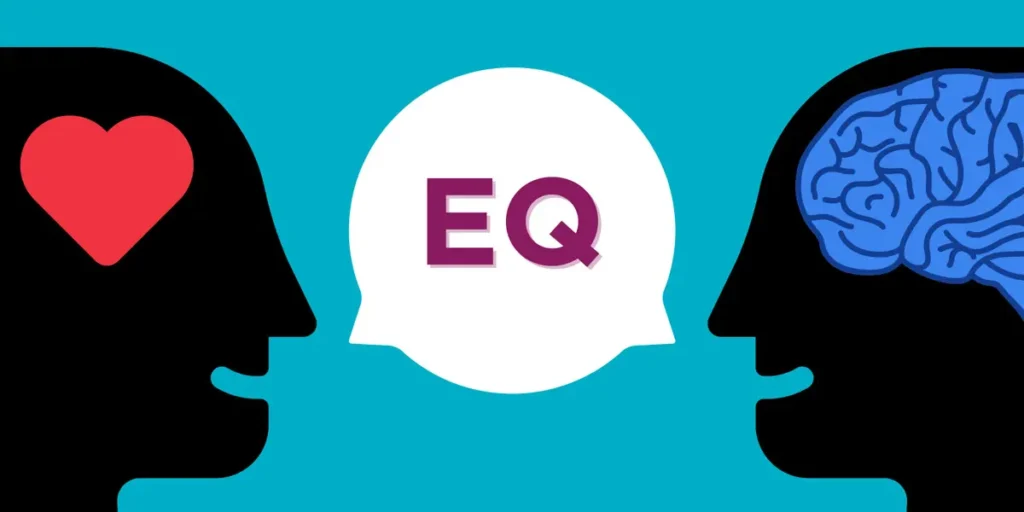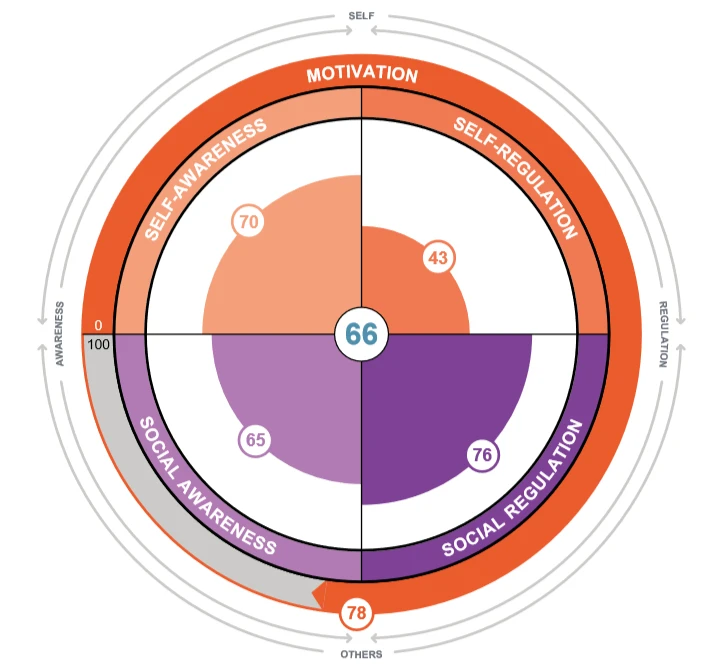Assessing Your Emotional Intelligence: A Practical Guide to Identifying Strengths and Growth Areas
Over the past few weeks, we’ve explored key components of Emotional Intelligence (EQ)—from recognizing and identifying emotions to tracking emotional triggers and learning how to manage them. Now, it’s time to take a step back and assess your overall Emotional Intelligence.
The EQ Self-Assessment Tool is designed to help you evaluate your strengths and identify areas where there’s room for growth. This self-reflection is essential for developing a balanced EQ, allowing you to make informed decisions on how to improve your emotional awareness, self-regulation, and relationship management.

Why an EQ Assessment Matters
While many of us know Emotional Intelligence is important, understanding how well we manage our emotions and navigate social interactions isn’t always clear. That’s where an EQ self-assessment becomes invaluable.
Here’s why assessing your EQ matters:
- Personal Insight: This tool helps you uncover your emotional strengths—whether you’re highly self-aware or great at managing social relationships—and highlights areas for improvement.
- Clear Development Goals: Once you understand where you excel and where you struggle, you can create a targeted plan to improve specific EQ skills.
- Career and Leadership Growth: Emotional Intelligence is a key component of effective leadership. By developing all four pillars of EQ, you position yourself for success in both professional and personal environments.
Think of this assessment as a personal roadmap to understanding how well you’re managing your emotions, understanding others, and handling relationships. The more you know, the more you can grow.
How the EQ Self-Assessment Tool Works
The EQ Self-Assessment Tool evaluates your Emotional Intelligence across four key components:

- Self-Awareness: How well do you recognize and understand your own emotions? Are you aware of how your feelings impact your decisions and behaviors?
- Self-Management: How well do you regulate your emotions, especially under stress? Are you able to keep calm and stay focused in difficult situations?
- Social Awareness: How attuned are you to the emotions of others? Do you easily pick up on social cues and understand how others are feeling?
- Relationship Management: How effectively do you manage your interactions with others? Are you good at resolving conflicts and building positive relationships?
Using the tool is simple. You’ll rate statements related to each component on a scale of 1 to 5, depending on how often they apply to you. After completing the assessment, you’ll have a clearer picture of your emotional strengths and areas that could use improvement.
Practical Example:
Let’s take the example of a team leader who uses the EQ Self-Assessment Tool. After completing the assessment, they realize they score high in Self-Awareness—they’re very good at recognizing their own emotions and understanding how those emotions affect their decisions. However, they notice a lower score in Social Awareness—they often miss the emotional cues of others and struggle to understand how their team members are feeling.
With this insight, the team leader now has a specific area to focus on. They start practicing active listening and observing body language in meetings to better pick up on their team’s emotions. Over time, they see an improvement in how they interact with others and how their team responds to them.
This example highlights how the EQ Self-Assessment Tool can guide personal growth by revealing areas where focused attention can make a big difference.
Benefits of Using the Tool:
The EQ Self-Assessment Tool offers several benefits:

- Comprehensive Understanding: By evaluating all four components of EQ, you get a complete picture of where you stand emotionally.
- Targeted Development: The assessment helps you identify specific areas to improve, such as emotional regulation, empathy, or conflict resolution.
- Informed Goal-Setting: Once you know your strengths and growth areas, you can set actionable goals to develop a more balanced EQ.
Whether you’re looking to improve your leadership abilities, become a better team player, or simply grow in your personal relationships, this tool provides the insights you need to start making meaningful progress.
Call to Action:
Ready to take the next step in developing your Emotional Intelligence? Download the EQ Self-Assessment Tool to evaluate your strengths and identify growth areas. By taking this assessment, you’ll gain the clarity you need to start making improvements in how you manage your emotions, understand others, and build stronger relationships.
Next week we will present the final tool in our Emotional Intelligence series - understanding psychological safety in teams. If you haven’t already, we encourage you to revisit the previous tools on emotional identification and tracking emotional triggers to continue building your EQ.